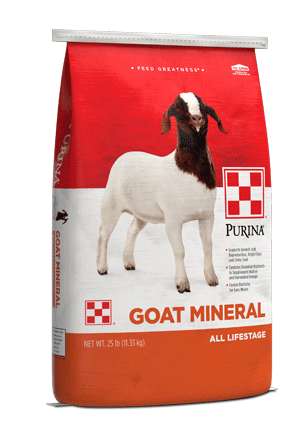
How to Get Started Raising Backyard Goats
Wellness : Nutrition
Wellness : Health

Get started with backyard goats using these 11 tips.
Thinking about raising backyard goats but not sure where to start? Whether you’re raising goats as pets or to provide food for your family, the basics are the same – food, water and shelter. Planning for these fundamental requirements before your goats arrive will ensure a happy, healthy backyard herd.
Want more tips on how to raise goats? Sign up for our e-tips program to get more goat feeding and nutrition information.
Thinking about raising backyard goats but not sure where to start? Whether you’re raising goats as pets or to provide food for your family, the basics are the same – food, water and shelter. Planning for these fundamental requirements before your goats arrive will ensure a happy, healthy backyard herd.
Here’s everything you need to know before getting started with backyard goats:
- Buddy system: Goats are social, herd animals. Having at least two goats helps with overall health and gives them someone to interact with during the day.
- Shelter: Provide someplace for your goats to get out of the weather. It can be as simple as a few pieces of tin or an elaborate shed.
- Fencing: The saying goes, “if you can throw a bucket of water through it, a goat will find its way out.” While this may be a stretch, goats do need more secure fencing than most livestock. Chain link fence, woven wire or hog panels set at ground level can work nicely. Avoid an elevated fence or gaps between the barriers so goats aren’t tempted to crawl out.
- Space: Provide a minimum of 15-by-15 feet of space per pair of goats. The more space for them to move, the better it will be for their overall health and well-being.
- Water source: A fresh bucket of water every morning and evening is a simple way to deliver water to goats. If you use a larger tank, make sure it’s low enough for goats to reach.
- Feeders: Obesity is a common issue with backyard goats. Invest in a feeder for hay and goat feed to monitor and control feed intake. Fence hanging feeders or an elevated trough work great and allows you to better manage intake. Do not feed goats on the ground to avoid spreading internal parasites propagated via manure.
- Forage: Goats must eat the equivalent of 3% of their body weight in forage every day. For instance, a 100 lb. goat needs 3 lb. of forage each day. This can be hay or fresh grass provided by the backyard pen. Goats can be picky eaters, so it may take some trial and error to find the forage they like best.
- Goat feed: With forage quality likely limited in a backyard, supplemental nutrition is necessary to ensure goats receive sufficient nutrients. High fiber, low energy goat feed, such as Purina® Goat Grower 16 Plus Up DQ.0015, works well for backyard goats because they can’t overeat the pellets easily.
- Avoid bloat: Because backyard goats sometimes overeat, bloat can occur, causing gastric issues, and in severe situations lead to death. Feeding supplemental goat feed according to the label is always recommended to avoid bloat. Additionally, a pH balancer provides extra protection against bloat. Including Purina® High Octane® ALLEVIATE® gastric support supplement at a rate of 1 ounce per every 50 lbs. of body weight per day will help prevent and relieve potential bloat issues.
- Goat mineral: Supplemental feed and forage supply protein, fat and carbohydrates, but are lacking in vitamins and minerals important to maintaining a goat’s nutritional needs. Provide a loose bag mineral containing a balance of vitamins and minerals, such as Purina® Goat Mineral. Offer mineral free-choice in an elevated trough. Avoid using a mineral block because goats tend to climb things and play with it before eating.
- Entertainment: Goats are naturally curious and like to play. Giving your goats items to climb or jump from, like a ball or hanging material, is a good idea. Not only will it entertain the goats, but you’ll enjoy watching them.
Want more tips on how to raise goats? Sign up for our e-tips program to get more goat feeding and nutrition information.

